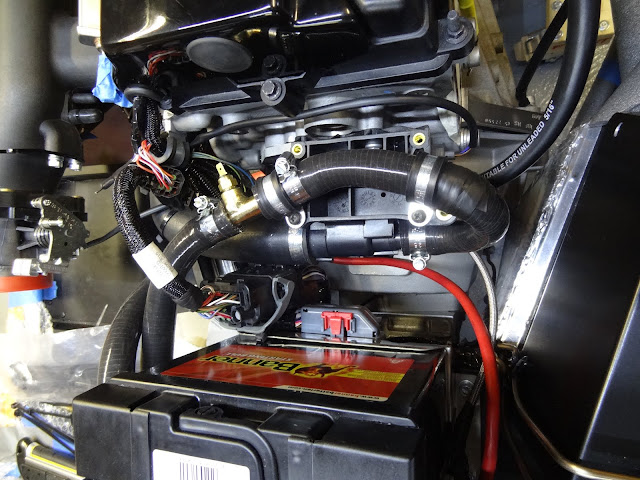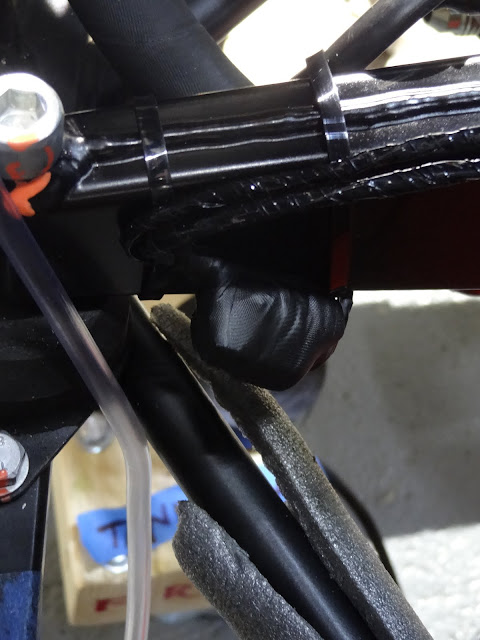Day 21- Sump Tank Plug and Watts Linkage
Sump Tank Plug
Bought some copper washers from the local car shop and fixed our hole problem.
 |
| Bolt, spring washer, plain washer, and copper washer. |
Watts Linkage
After going to fit the rear wings we found that it is easier to fit the wings first then the watts linkage (or radius arms if not opted), this way a slot doesn't have to be cut out of the wing, the hole may only have to be widened.
First we attached the rod ends to the link arms, measured to 475mm and 244mm centre to centre of the rod ends, then tightened the rod end using the locking nut.
 |
| Dab of Loctite under the locking nut. |
The link rod ends are then inserted into the bellcrank after the bell crank is widened to fit the rod ends. The rod ends are attached with the small bolts ensuring that the locnuts are on the same side as the raised side of the bellcrank, and that the waisted sides of the link arms are on the appropriate side.
 |
| Through Bolts for chassis attachment. Plenty of copper slip used. |
In order for the bellcrank to fit into the di dion tube the brackets had to be widened. We did this using a rag covered crowbar. The bellcrank spacers are then pushed into position inside the brackets (convert the 1/2" holes to 10mm holes for the bolts to be seated). The bellcrank is inserted and then bolts threaded through.
 |
| Bellcrank in bracket. |
The link arms are then bolted to the chassis using appropriate bolts and washers, then torqued to required value. To get the arms to align properly the di dion tube has to be lifted slightly to align holes. This is where two pairs of hands comes in handy.
We followed this method as we found that if following the instructions (link arm on first, then torqueing the arms when parallel to the ground, then attaching bellcrank) the link arms just rotate when moved into position for the bellcrank, meaning that there is not much value in the arm being spring loaded.
 |
| Right hand side in. |



















































